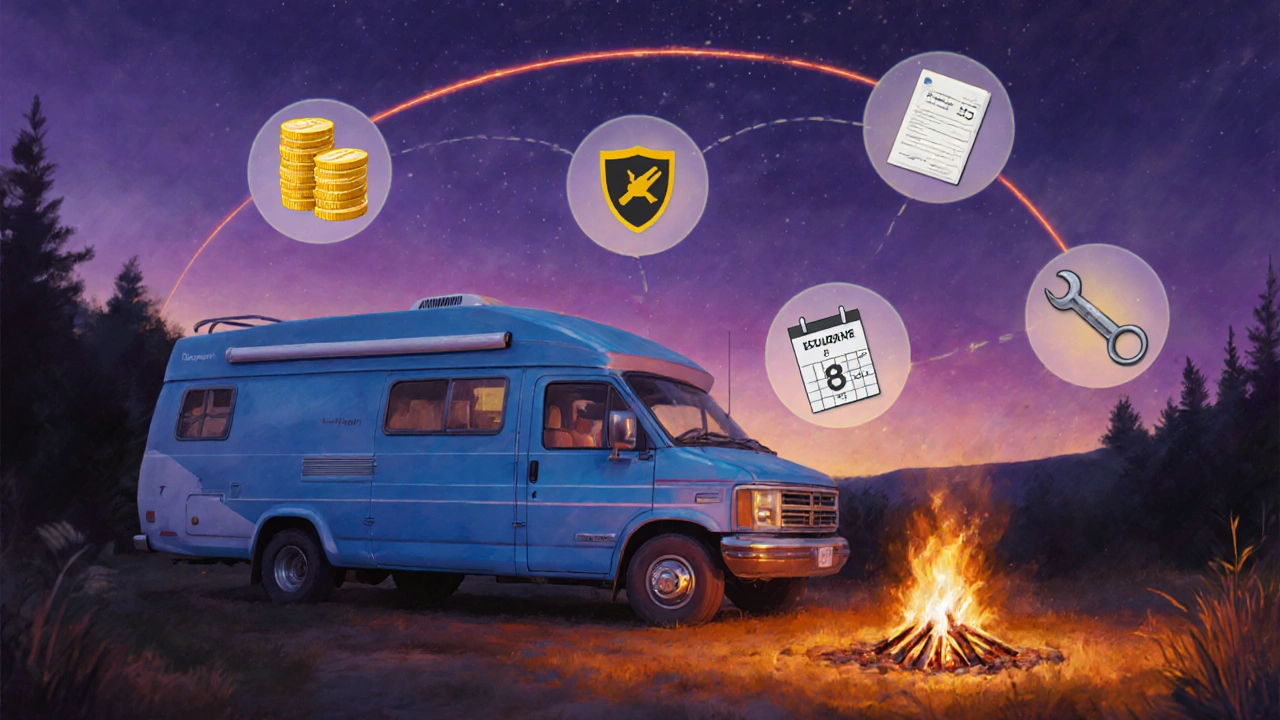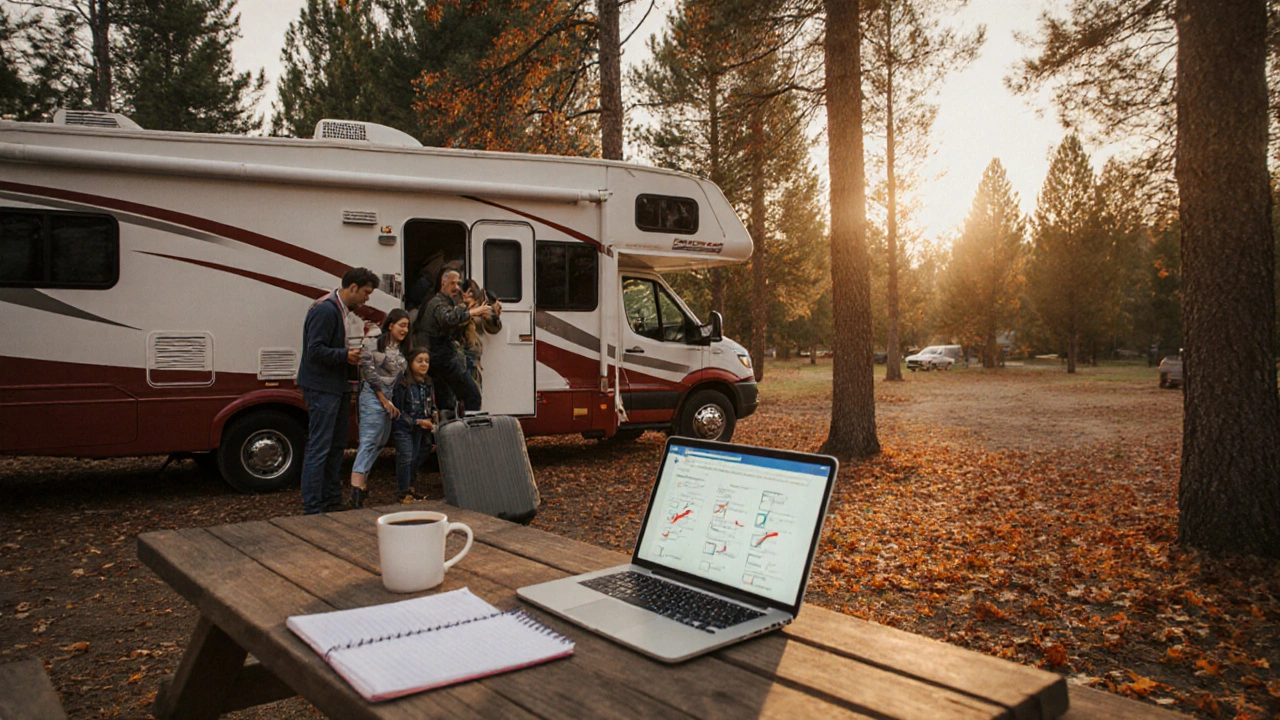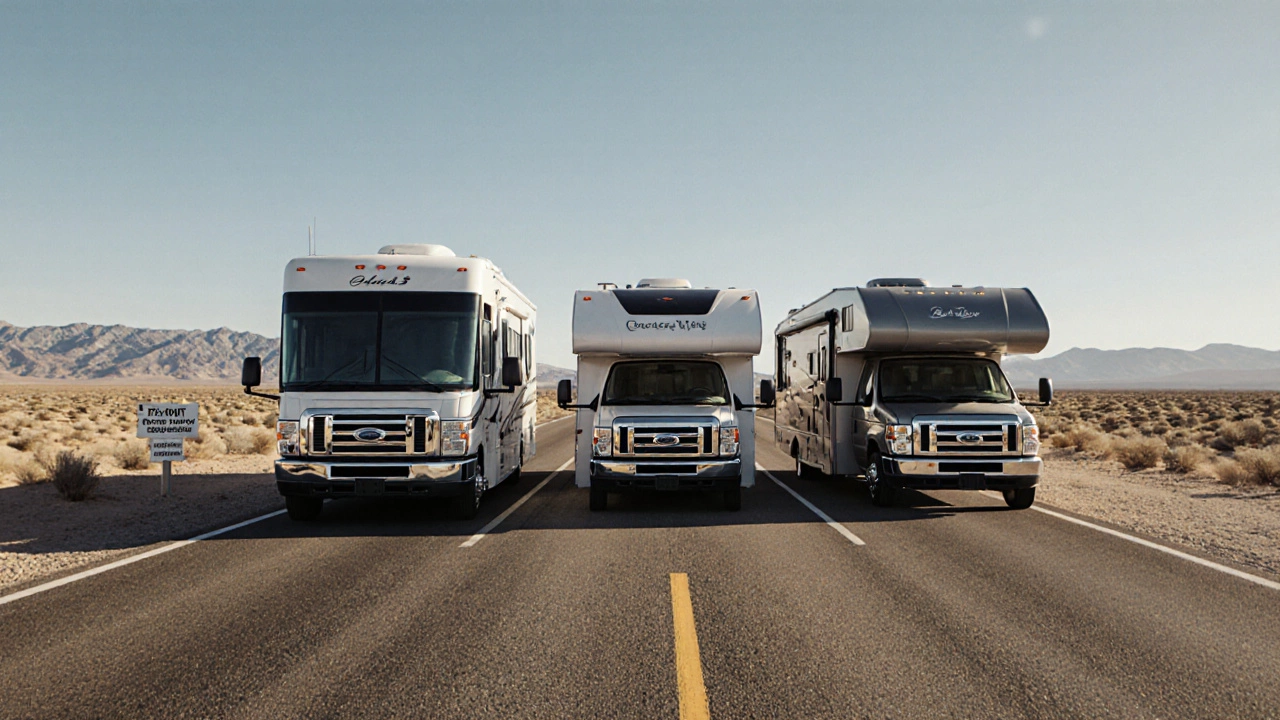Motorhome Rental Cost Calculator
Estimated Total Cost
$0.00When planning a road trip across the United States, motorhome hire is a rental service that lets you drive a fully equipped RV for a set period. In the U.S., rates vary by vehicle class, season, mileage allowance, and extra services such as insurance. If you’re wondering whether the price fits your budget, this guide breaks down every cost component, shows real‑world price tables, and gives actionable tips to lock in the best deal.
What Drives the Price of a Motorhome Rental?
- Vehicle class - Class A, B, and C motorhomes differ dramatically in size, amenities, and fuel consumption.
- Seasonality - Summer and holiday weeks command premium rates; winter and shoulder months are cheaper.
- Location - Rentals in high‑traffic states like California, Florida, or Colorado cost more than those in the Midwest.
- Mileage allowance - Most companies include a daily or weekly kilometre limit; extra miles are billed per mile.
- Insurance and coverage - Collision, liability, and personal effects coverage add a fixed daily fee.
- Deposit & cleaning fees - A refundable security deposit protects the owner; a mandatory cleaning charge is often required.
- Additional equipment - Kitchen kits, bike racks, and outdoor furniture are optional add‑ons.
Typical Daily Rates by Motorhome Class
| Class | Length (ft) | Sleeping Capacity | Typical Daily Rate (USD) | Fuel Efficiency (MPG) |
|---|---|---|---|---|
| Class A motorhome | 30‑45 | 6‑8 | $200‑$350 | 6‑9 |
| Class B motorhome | 16‑22 | 2‑4 | $130‑$200 | 12‑18 |
| Class C motorhome | 20‑30 | 4‑6 | $150‑$250 | 9‑13 |
These figures represent base rates without insurance, mileage overages, or campsite fees. The motorhome hire USA average hovers around $180 per day when you blend all three classes and seasons.
Weekly, Monthly, and Long‑Term Discounts
Renters who commit to longer periods receive automatic discounts that can shave 10‑30% off the daily price. Here’s a quick look at typical discount structures in 2025:
- Weekly rentals: 5‑10% off the summed daily rate.
- Bi‑weekly rentals: 12‑15% discount.
- Monthly rentals: 20‑30% discount, often capped at a flat weekly rate after the first two weeks.
- Quarter‑year rentals: Many companies treat these as semi‑permanent leases, with rates comparable to owning a used RV.
For example, a Class B motorhome at $150/day for a 30‑day trip would cost $4,500 raw. Applying a 25% monthly discount drops the total to $3,375, saving $1,125.

Extra Costs You Can’t Ignore
- Insurance: Full‑coverage packages range from $15‑$30 per day. Some credit cards include rental insurance, so check before you buy.
- Mileage overage: Most rentals include 100‑150 miles per day. Extra miles are billed $0.25‑$0.45 per mile.
- Generator fuel: Larger Class A rigs often need diesel for the onboard generator. Expect $3‑$4 per gallon.
- Campsite fees: State parks charge $20‑$45 per night; private RV parks $30‑$60. Luxury resorts can exceed $100 nightly.
- State taxes & fees: Some states impose a rental tax of 5‑10% on the total bill.
- Cleaning & damage deposit: Typically $150‑$300 refundable, plus a $75 cleaning fee.
How to Secure the Best Deal
- Book early or last‑minute: Early‑bird discounts appear 8‑12 weeks before peak season; conversely, owners slash prices a week before a rental date to fill gaps.
- Compare platforms: Use specialist sites like Outdoorsy, Escape Campervans, and USRV. Prices can differ by 10‑20% for the same vehicle.
- Travel off‑season: Late fall (October‑November) and early spring (March‑April) still offer mild weather in many regions while rates drop 30‑40%.
- Negotiate mileage: If you plan a long cross‑country trek, ask for an unlimited mileage clause. Many owners are happy to include it for an extra $50‑$100 per week.
- Bundle extras: Some renters add kitchen kits, bike racks, or pet‑friendly packages. Bundling them with the rental can be cheaper than buying them separately at the campsite.
- Check for discounts: AAA, AARP, and military affiliations often fetch 5‑15% off. Also look for coupon codes on travel blogs.

Sample Budget Scenarios
Below are three realistic itineraries that illustrate total costs, including the most common add‑ons.
- Couple, 7‑day summer trip in California (Class B)
- Base rate (7 days × $180) = $1,260
- Weekly discount (5%) = -$63
- Insurance (7 × $25) = $175
- Mileage (included 150 mi/day = 1,050 mi, actual 1,200 mi → 150 mi overage × $0.35) = $52.50
- Campsite fees (7 × $35) = $245
- Cleaning & deposit = $225
- Total ≈ $1,894
- Family of four, 14‑day fall road trip in the Midwest (Class C)
- Base rate (14 × $190) = $2,660
- Two‑week discount (12%) = -$319.20
- Insurance (14 × $20) = $280
- Mileage (included 120 mi/day = 1,680 mi, actual 2,000 mi → 320 mi × $0.30) = $96
- Campsite fees (14 × $30) = $420
- Cleaning & deposit = $250
- Total ≈ $3,486
- Solo traveler, 30‑day winter adventure in Texas (Class B)
- Base rate (30 × $150) = $4,500
- Monthly discount (25%) = -$1,125
- Insurance (30 × $18) = $540
- Mileage (unlimited negotiated) = $0
- Campsite fees (30 × $25) = $750
- Cleaning & deposit = $200
- Total ≈ $4,865
Quick Checklist Before You Hit the Road
- Choose vehicle class that matches sleeping and kitchen needs.
- Confirm mileage allowance - ask for unlimited if you plan >1,500 mi.
- Shop insurance options - compare rental company vs personal policy.
- Calculate expected campsite fees based on route.
- Book during off‑peak weeks or use discount platforms.
- Read the rental agreement for fuel, cleaning, and damage clauses.
Frequently Asked Questions
What is the cheapest class of motorhome to rent in the U.S.?
Class B motorhomes, also called camper‑vans, start around $130 per day and are the most fuel‑efficient option, making them the cheapest for short trips.
Do I need extra insurance if I already have car insurance?
Most personal auto policies don’t cover RV rentals. Check with your insurer - many offer a rider for an extra $10‑$20 per day. If not, purchase the rental company’s full‑coverage plan.
Is unlimited mileage worth the extra cost?
For trips over 1,500 miles, the unlimited‑mileage add‑on (usually $50‑$100 per week) saves money compared to paying per‑mile overage, and it removes the stress of tracking mileage.
Can I rent a motorhome if I’m under 25?
Most U.S. rental companies set the minimum age at 25, but a few allow 21‑year‑olds with a young‑driver surcharge (typically $25‑$40 per day) and a higher deposit.
Do I need a special driver’s license to operate a motorhome?
A standard Class C driver’s license covers motorhomes up to 26 ft. Larger Class A rigs (over 26 ft) may require a commercial Class B or a special endorsement in some states.
